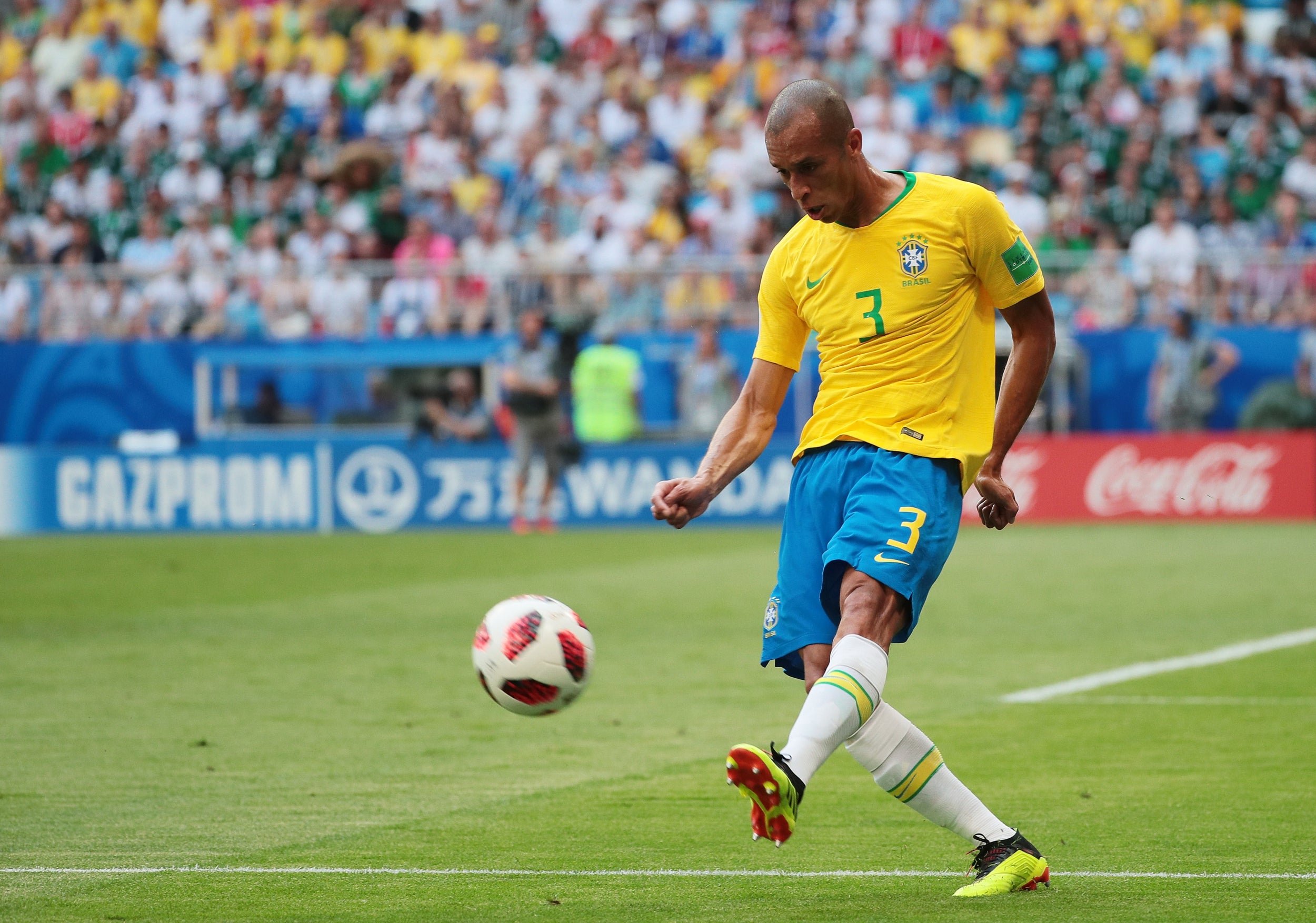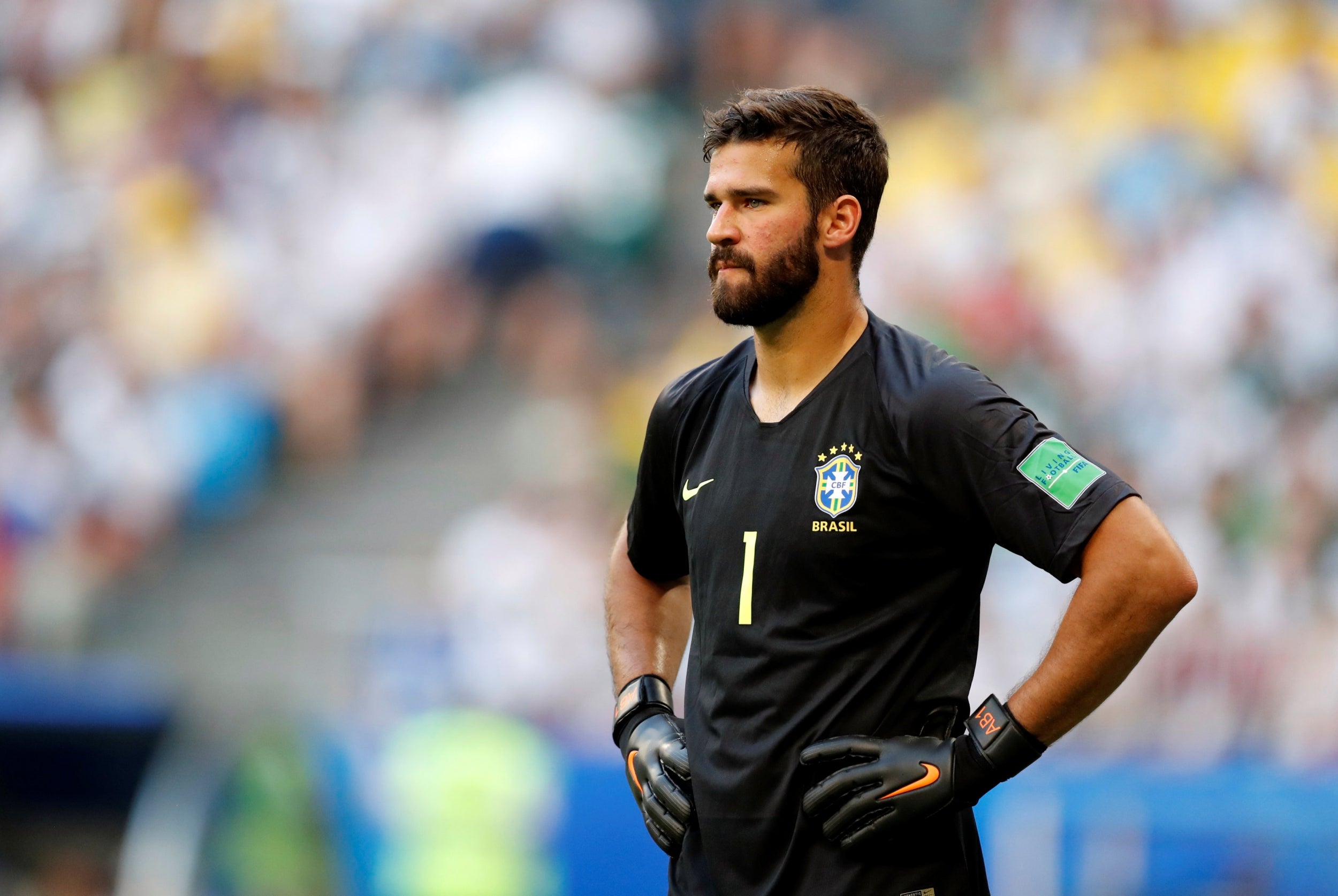World Cup 2018: Tite deconstructs blueprint behind Brazil’s immovable defensive foundations
There is a hugely intelligent blueprint and architecture, that displays a level of coaching maybe above anyone left in the World Cup
It was a fine indication of how the game in Samara had changed, and how Brazil’s entire game has changed.
In the opening minutes of their last-16 tie, a frenzied Mexican attack were so clearly targeting what they must have thought was a fragile replacement right-back in Fagner, and initially having what looked like success. Carlos Vela’s pace was troubling the defender, who was so clearly struggling to keep up. Except, really, Vela and the rest of the Mexican attack were still struggling to make any actual chances. The best they could muster was blazed shots from distance, such was the support around Fagner. And by the time the more desperate Mexican attack were trying the same approach in the last few minutes of the game, the right-back was himself so much more composed – and assertive.
After one rock of a block, he turned around to his defensive partners and masculinely embraced them, effectively celebrating a tackle.
It immediately reminded of Giorgio Chiellini and Gigi Buffon at Juventus, making it all the more pointed that Brazil’s assistant Sylvinho actually brought up the defensive brilliance of the Italian champions after the game.
“Napoli plays offensive football very well, but Juventus is more defensive and more balanced,” the coach said. “The balance of a team has to do with not conceding and for seven years Juventus has been champion. Six times out of seven, they had the best defence on the league. [Max] Allegri always says that balance is the key to success. You can’t concede silly goals and be a champion… But this doesn’t make a team defensive. It’s a balanced team and very well organised.
“So we understand. It’s Tite’s signature, it’s our signature.”
It’s also the foundation this Brazil are built on, but there is so much more to it than – well – raw emotion seeing big blocks thrown into the right places.

There is a hugely intelligent blueprint and architecture, that displays a level of coaching maybe above anyone left in the World Cup, and is maybe why Brazil will end up a level above anyone else as champions.
It is not just that they are defending well in executing all the basics. It is how cleverly they are moving their defensive shape and thereby limiting the space of opposition attacks to do much before they even realise it. Just when they think they’re shaping for a shot, the opening is gone. This is what forwards as good as Kevin De Bruyne and Eden Hazard are going to have to figure out in the quarter-finals.
This is why Brazil have only conceded five shots on target in four games, fewer than any other side. This is why Tite was so confident in actually mentioning such stats after the more underwhelming 2-0 win over Costa Rica, because he knew the fundamentals were right.
This is also what Tite was confident enough to go into deep detail about at the end of his post-match press conference on Tuesday. After all manner of pantomime questions about Neymar and the rest of the media circus around this side, the manager was willing to rise above that as well, and offer a seriously detailed deconstruction of his defensive approach.
The key with Brazil is that, in setting up their defensive phalanx, they first take command of the area. Once that is coordinated and sorted, they then focus on the ball in relation to the area, and then the opposition player in relation to those two.
It is a four-dimensional approach to the most two-dimensional part of the game, and almost to defending what Pep Guardiola does to attacking.
It also comes from a lot of hard work in terms of preparing and ingraining that coordination.

“What we have is we mark the sectors,” Tite explained. “We don’t mark individually. You don’t race around and mark that person. We mark aggressively per sector of the pitch, that’s why we block so many finishes and so many crosses. When you worry about your area of the pitch, you shorten the space of our opponents. You’re marking the ball and then the man. You mark the area of the pitch, then you look at the ball, then you look at the man. That’s how we understand others, and this is also laudable, you mark the man ... That’s how you think you have to bet on a strategy and practice for it. We practice this style, first area of the pitch, then the ball, then the man and we put the pressure on.”
It regularly lifts the pressure on them in any game.
That this has been so illustrated the day after Spain went out is all the more notable. In the buildup to their self-inflicted defeat to Russia, Gerard Pique stressed that defensive solidity is the key to success in international knock-out tournaments, while Fernando Hierro began to obsess about the defensive records of past champions, showing them to his squad.
None of them seemed to pay it any head, because Spain made another sloppy defensive error, and they evidently hadn’t done anything like the kind of preparatory work that Brazil had. Tite himself so conspicuously mentioned that Russia deserved to go through due to their defensive work.
He knew Hierro was right. He knew what had to be done before this World Cup. This is why Brazil only conceded two under Tite in qualifying. This is why they should be favourites.
Everyone else as to figure out how to create a proper chance against them, let alone break them down. Things have changed.
Join our commenting forum
Join thought-provoking conversations, follow other Independent readers and see their replies
Comments
Bookmark popover
Removed from bookmarks